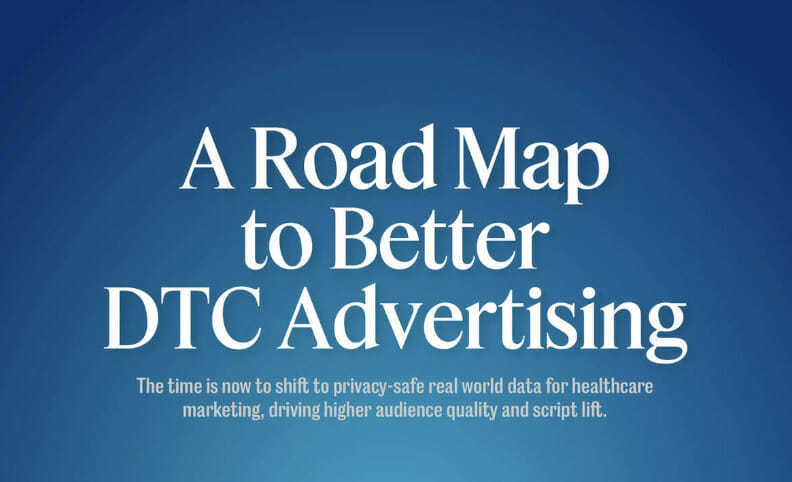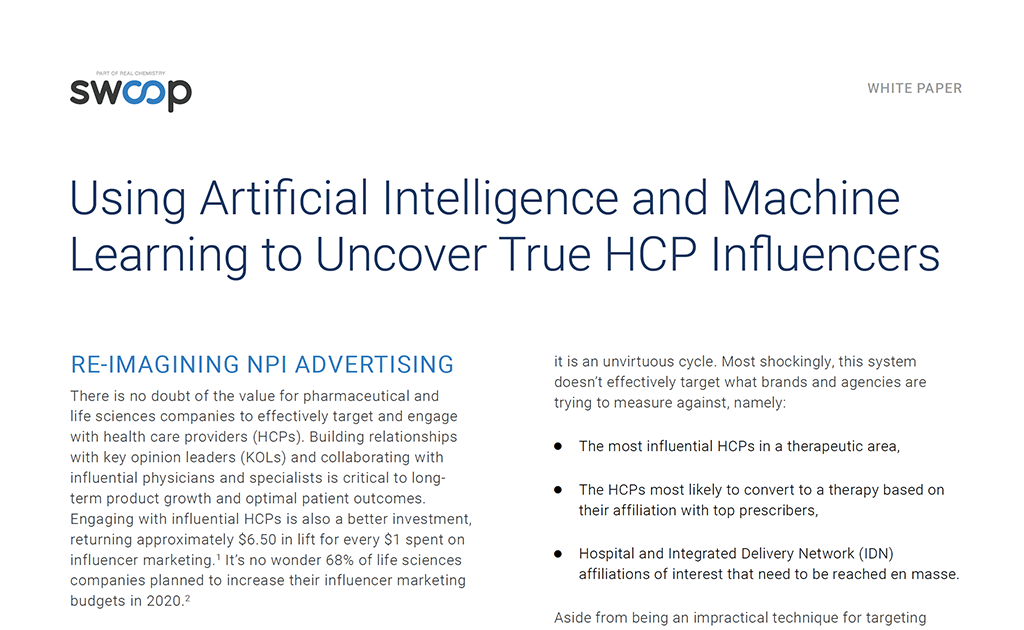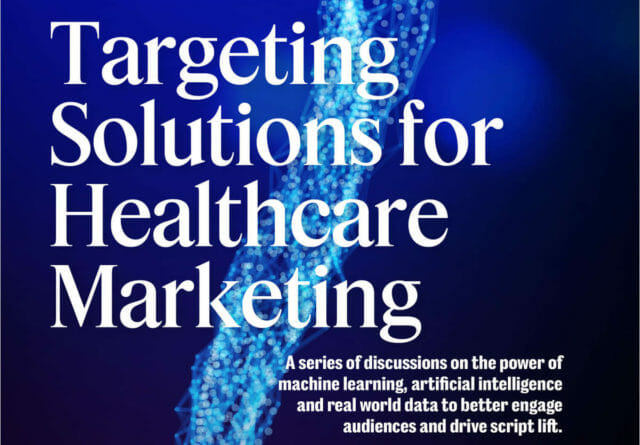Conventional, demographic-driven, one-size-fits-all patient audiences fall short. They fail to consider a brand’s specific needs and core therapeutic advantages, as well as how patients consume healthcare information.
In a recent podcast with Steve Madden, GM and editor-in-chief, MM+M, Swoop cofounder and CTO Simeon Simeonov explained how applying privacy-safe machine learning and artificial intelligence to real world data can help medical marketing professionals build highly targeted audience segments customized for campaigns and activated through the most effective channels.
Targeting with accuracy and speed
Swoop’s goal, as Simeonov explained at the outset, is based on a very simple premise, “You should target what you want to measure and measure what you want to accomplish.”
The issue, as he went on to explain, is that oftentimes “People want to achieve one thing and they measure that thing but target something completely different. The reason for this, historically, is time and money — in the past it took a long time and was expensive to build custom audience segments.”
The fix? Machine learning and artificial intelligence, both of which Swoop leverages to create custom segments tuned to the specific objectives of a campaign, activated via programmatic, social media, site personalization, addressable television, linear television and/or on-demand audio.
Making the sausage
Swoop’s unique capabilities are a result of beginning life, nearly 11 years ago, as an end-to-end advertising network. It’s a modern vendor whose culture and technology platforms and privacy architectures are designed for the challenges of modern data processing and very sensitive health data.
“No other company that does health data targeting has this kind of experience,” explained Simeonov. “No one else knows how the sausage is made. Additionally, we have built thousands of different segments … many hundreds of which are currently active today.”
This allows Swoop, for agencies and clients, to use the measurement data to discuss how they are configuring campaigns and then connect that information back to the measurement.
“The key message is that you need to understand the limitations of DSPs’ targeting and optimization platforms,” added Simeonov. “You need to understand how to configure campaigns, which means tapping someone who understands the capabilities and limitations of health media measurement in the very noisy and dirty real world.”
And in the spirit of the whole being greater than the sum of its parts, Simeonov revealed, “We’re actually working on a playbook for this, freely available to the industry, to help improve outcomes for everyone’s clients.”
Living in the real world
The importance of tapping real world data cannot be overstated.
“When you look at systems that optimize media and advertising — whether it’s Google or Facebook or The Trade Desk — none of them have access to real world evidence,” Simeonov said. “So even though you’re trying to achieve objectives in the real world related to health data, you’re working with blind execution platforms. What you really want to do if you want to achieve a great outcome in the real world as measured by real world evidence, is target what you’re going to measure in real world evidence.”
By way of example (and bound to make you hungry), Simeonov used a chocolate analogy.
“A good friend of yours is a great baker and you want to bake a cake for them. They say, ‘Great! Bake me a flourless chocolate cake.’
But there’s one problem. You’re allergic to chocolate. ‘Don’t worry about it,’ you tell your friend. ‘I’ll just whip you up a flourless chocolate cake with my general baking knowledge.’ That’s exactly what happens when you optimize your campaigns without actually having access to the data you’re using to achieve the outcomes of.”
The big takeaway here is the value of working with a company which has the knowledge and ability to achieve real world objectives by following the best practices of campaign configuration and understanding health media measurement.
From the November 01, 2021 Issue of MM+M - Medical Marketing and Media








